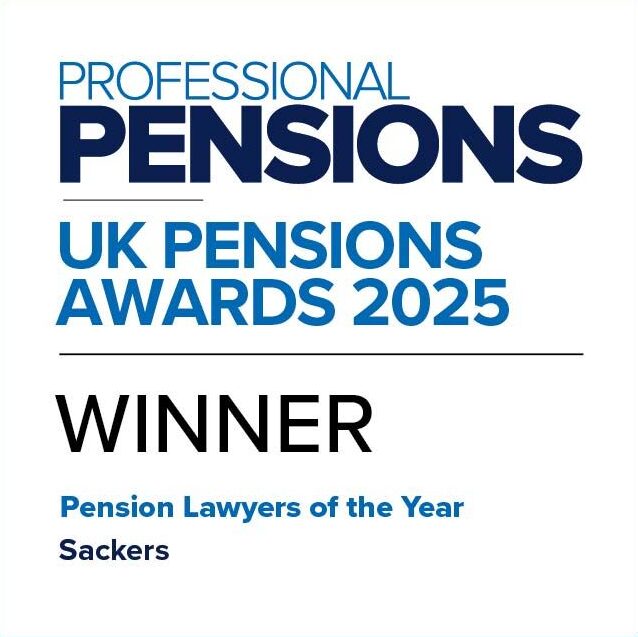Introduction
Perhaps wishing to tidy up some loose ends before the summer break, HMRC has published a response to its recent consultation on IHT, alongside a policy paper and draft legislation.
Download a PDF of this Alert.
In this Alert
Key Points
- The Government is going ahead with its original proposal of including most unused pension funds and death benefits in the value of a person’s estate for IHT purposes from 6 April 2027.
- But all death in service benefits payable from registered pension schemes will be out of scope of IHT, whether discretionary or non-discretionary.
- The draft legislation sets out a proposed process for reporting and paying any IHT, which HMRC will refine after working with industry.
- After listening to industry feedback, there are some important changes to the original proposals, including that personal representatives (“PRs”), rather than a pension scheme administrator (“PSA”), will be primarily liable for reporting and paying IHT on any unused pension funds and death benefits. However, pension beneficiaries may be able to give notice requiring their scheme’s PSA to pay the IHT on their behalf directly to HMRC.
- The Government has published draft legislation to implement these changes for technical consultation. The deadline for responses is 15 September 2025.
- As the reporting and paying processes will require information to be shared between PSAs, PRs and HMRC at various points, the Government will consult separately on any necessary changes to legislation to facilitate this “in due course”.
Background
In October 2024, the Government announced its plans to bring most unused pension funds and death benefits into scope of IHT from April 2027. The intention was to ensure that tax reliefs on pensions are being used for their intended purpose, ie to encourage saving for retirement and later life, by removing the opportunity for individuals to use pensions for IHT planning.
The changes were also intended to address a “distortion” in tax treatment between discretionary and non-discretionary death benefits. Discretionary death benefits paid from a registered pension scheme do not currently attract IHT, but non-discretionary death benefits, where the scheme member can choose the recipient, are already treated as part of the member’s estate for IHT purposes. The majority of registered pension schemes currently provide discretionary death benefits.
Some employers may have excepted group life schemes in place but, as these are not registered pension schemes, they are not in scope of these proposals.
Original proposals
A technical consultation on the processes to report and pay any IHT due to HMRC closed in January 2025. Under the original proposals:
- most authorised death benefit payments, except a dependant’s scheme pension and a charity lump sum death benefit, would be brought within the value of a person’s estate for IHT purposes
- certain life policy products “purchased with pension funds or alongside them” were excluded. But it was unclear precisely what this captured, and whether insured death in service benefits would, for example, be carved out
- in a significant change to the current position, PSAs would have had to report and pay the IHT due on pension elements of a scheme member’s estate
- there was no plan to change the income tax treatment of death benefits. This meant that a death benefit could be subject to both IHT and income tax at the recipient’s marginal rate.
These proposals represented various challenges for the industry (see our consultation response), which is reflected in the volume of responses HMRC received, being just shy of 650 in total. Whilst HMRC had made clear the policy intent was not going to change, it engaged with the industry throughout the process – attending various webinars and holding several workshops with pensions and tax professionals and representative bodies.
Revised proposals
The Government has confirmed it will go ahead with its proposals to bring most unused pension funds and death benefits into scope of IHT, in respect of deaths on or after 6 April 2027. Dependants’ scheme pensions, death in service benefits (see below) and charity lump sum death benefits will all be excluded. The existing IHT principles providing exemption for death benefits passing to a surviving spouse or civil partner, and registered charities will be maintained.
PRs primarily liable for reporting and paying IHT
Recognising the significant difficulties associated with making the PSA liable for reporting and paying IHT, the Government has decided not to proceed with the PSA-led process in the consultation. Instead, from 6 April 2027, PRs will be primarily liable for reporting and paying IHT due on unused pension funds and death benefits. PRs already report and pay IHT on the deceased’s estate, including for non-discretionary pension schemes.
Pension beneficiaries will become jointly and severally liable for any IHT due on unused pension fund and death benefits to which they are entitled, from the point they are confirmed as the beneficiary.
Options for paying IHT
The PR and pension beneficiaries will have the following options available for paying IHT:
- pay directly from free estate – PRs can pay the IHT due on the entire estate, including the pensions component, directly from funds in the free estate
- pension beneficiaries direct PSAs to pay – the Government intends to set up a new scheme through which beneficiaries can direct the PSAs to pay the IHT on their behalf directly to HMRC
- pension beneficiaries take their pension benefits in full and pay IHT directly – the beneficiary would need to contact HMRC to arrange a refund for any income tax paid on the amount of the IHT charge on their benefits.
HMRC plans to work with the pensions industry to provide clear guidance and support for pension beneficiaries in respect of their IHT liability and their options for paying any IHT due.
Death in service benefits out of scope
From 6 April 2027 all death in service benefits payable from registered pension schemes will be out of scope of IHT. This means that there will be consistent treatment of death in service benefits between discretionary and non-discretionary schemes. This is in line with the broader policy objective of removing inconsistencies in the IHT treatment of different types of pension benefits. It also means that death in service benefits paid by non-discretionary pension schemes which are currently in scope of IHT, such as most public sector schemes, will be carved out of scope from 6 April 2027.
Other benefits
Addressing some queries raised in consultation responses, the Government has clarified the following:
- trivial commutation death benefits – these are one-off payments, not exceeding £30,000, that convert a person’s entitlement to a small amount of pension income into a single lump sum. The decision to commute pension income can be made at any point when the relevant conditions are met. The intention is that, where the member had a right to a small pension income which they could commute, the value would be in scope for IHT. However, a beneficiary can also commute dependent scheme pension income, which is not within scope of IHT. As such, when looking at whether a trivial commutation lump sum falls within the scope of IHT, the value of the original pension income should be considered (not the value of the pension at the time the trivial commutation payment is made)
- joint life annuities – where a member chooses to take a joint life annuity, it continues to be payable to the chosen survivor after the member’s death (usually at a reduced rate). If the chosen survivor is a spouse or civil partner the usual IHT exemption would apply. For unmarried couples and children, the rights of the survivor are separate from the rights of the member, so are not part of the member’s estate and not in scope of IHT.
- unauthorised payments – any unauthorised payments made from a deceased member’s pension fund will be in scope of IHT.
Income tax
Income tax will not be due on the amount of relevant death benefits equal to any IHT due on that pension. HMRC will ensure that there are mechanisms in place for pension beneficiaries to recover any overpayments of income tax, if needed.
Proposed process
The reporting and payment process is broadly intended to work in practice as follows:
- Stage 1 (information exchange to establish the value of any pension benefits to be included in the estate) – PRs will, as now, identify the pension schemes of which the deceased was a member and contact the relevant PSAs to inform them of the member’s death. PSAs must tell the PRs the value of the pension for IHT purposes within 4 weeks of receiving the member’s death notification
- Stage 2 (PRs value the estate) – PRs will collect information from each PSA and other components of the estate to reach a total valuation of the estate and determine whether an IHT account should be returned to HMRC
- Stage 3 (PRs file IHT account and pay IHT (if needed)) – if IHT is due, PRs will establish how much IHT is attributable to the different pension components of the estate and submit an account to HMRC. PRs will inform the pension beneficiaries (if known) and the PSA of the amount of the IHT due on their component of the estate. There are then several ways that the IHT on the pension component of the estate can be paid (see above)
- Stage 4 (distribution of pension benefits (PSAs and beneficiaries)) – once they have been notified of a death, the PSA and trustees (who may well be the same) will start the process of identifying beneficiaries and paying out benefits. For non-exempt beneficiaries, the PSA will explain that IHT may be due on the pension benefits and that the beneficiaries are now jointly and severally liable with the PRs for any IHT due
- Stage 5 (amendments) – PRs will be responsible for managing any amendments to the estate and submitting any amended IHT accounts to HMRC.
HMRC acknowledges that there will be some overlap in the stages and that the proposed process doesn’t “capture every scenario”. It will work with the industry to develop and refine the processes ahead of April 2027.
Information sharing
The above process requires information to be shared between PSAs, PRs and HMRC at various points. Although PSAs and PRs are already required to share information about the deceased and beneficiaries after a member has died, these requirements will need to be expanded.
What’s next?
The technical consultation on the draft legislation closes on 15 September 2025, with draft legislation to be published “in due course” on the changes to the information sharing requirements. HMRC will also provide further tools and guidance on the changes to support PRs, PSAs, and beneficiaries ahead of implementation in April 2027.









